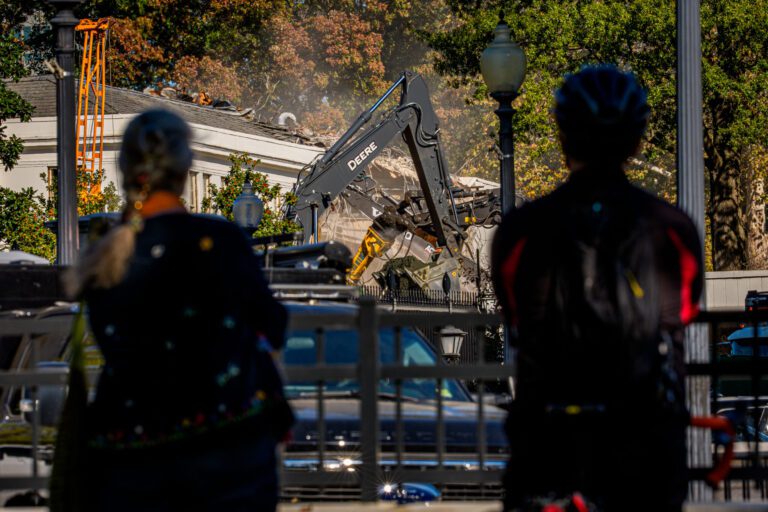Trump’s Grand Ballroom: A Controversial Addition to the White House
The construction of a new ballroom at the White House has sparked intense debate, with critics taking to social media to voice their concerns. Following the release of images showing the East Wing’s facade being dismantled, reactions have ranged from outrage to support for what the Trump administration describes as a "visionary" addition.
A Visionary Addition or Historical Destruction?
In a statement issued on Tuesday, the White House defended the $250 million ballroom construction, characterizing critics as "unhinged leftists" manufacturing outrage. The administration underscored the project as a necessary enhancement, echoing historical improvements made by previous presidents.
"The ballroom will be a bold, necessary addition that echoes the storied history of improvements and additions from commanders-in-chief to keep the executive residence as a beacon of American excellence," the statement read.
The new ballroom aims to accommodate large crowds, seating up to 650 people—more than three times the capacity of the East Room, which is currently the largest room in the White House at just under 3,000 square feet.
Historical Context of White House Renovations
The White House has undergone various renovations throughout its history, underscoring a long tradition of adapting and improving "The People’s House." Notable examples include:
- Teddy Roosevelt: Built the West Wing.
- Franklin D. Roosevelt: Added the East Wing and an indoor pool.
- Harry Truman: Oversaw a complete gut renovation due to structural concerns.
- Richard Nixon: Constructed a bowling alley.
- Barack Obama: Added a basketball court.
These enhancements have historically ensured the White House remains operational and relevant.
A Mixed Response
The decision to proceed with the ballroom construction has faced backlash. Critics argue that President Trump is disregarding the significance of the residence, with some referring to it as "destroying ‘The People’s House.’"
Hillary Clinton weighed in, commenting on X (formerly Twitter), "It’s not his house. It’s your house. And he’s destroying it." Meanwhile, journalist Jim Acosta questioned the precedent being set for future renovations.
Public and Governmental Backlash
The Treasury Department, which overlooks the construction site, admonished employees against sharing images of the ongoing project. In an email reported by The Wall Street Journal, a Treasury official wrote:
"As construction proceeds on the White House grounds, employees should refrain from taking and sharing photographs… without prior approval from the Office of Public Affairs."
Navigating Regulations
The construction project has raised eyebrows about its compliance with regulatory processes for large projects at the White House. Typically, these projects undergo a rigorous four-step review process, requiring public meetings and involvement from various commissions, including the National Capital Planning Commission.
However, as the funding for the ballroom is reportedly covered entirely through private donations, the administration appears to have opted for expedited execution.
Implications for Future Presidential Actions
Scott Jennings, a former special assistant to President George W. Bush, weighed in on the ongoing conversation surrounding the ballroom:
“I don’t think it’s super unusual for the White House to undergo massive construction projects… The White House is typically under construction either in small ways or in large ways.”
Conclusion: A Temporary Stir in Long-Term Tradition
The discussions surrounding the new ballroom reflect a broader narrative about the evolving nature of the White House and how future leaders might prioritize improvements to the executive residence. As construction continues, it’s clear that President Trump’s ambitious addition is just another chapter in the ongoing story of "The People’s House."
For a detailed look at past renovations of the White House, visit White House Historical Association.


